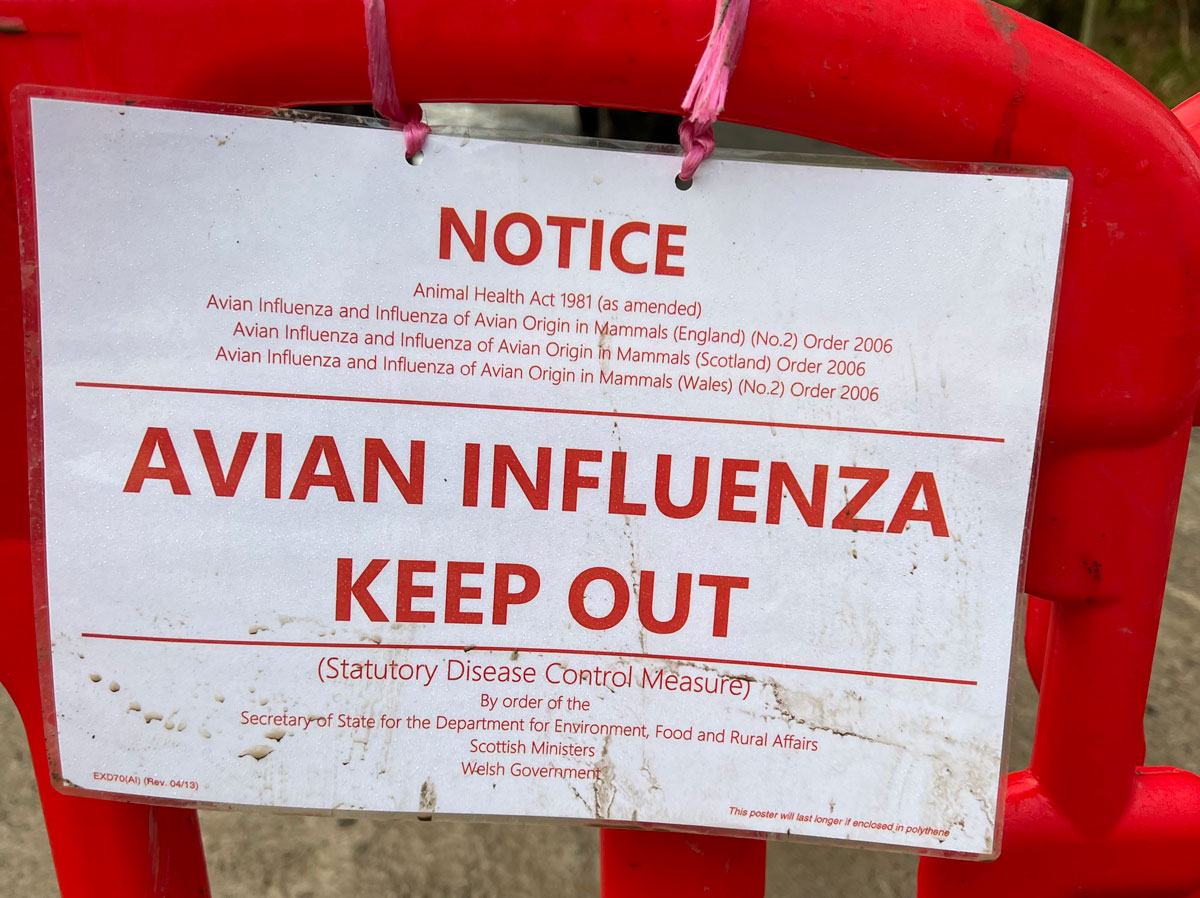
Work to understand how avian influenza behaves in wild bird and mammal populations will be pushed forward with the launch of a new £2.3m research consortium.
British scientists from a range of organisations will collect and analyse samples from a range of bird and mammal populations to better understand how the virus behaves.
The research group aims to fill current gaps in understanding about its transmission within wild birds, as well as the wider risks to mammals.
The most recent outbreaks of the current H5N1 strain of high pathogenicity avian influenza (HPAI) were the largest ever in the UK and devastated wild bird populations.
This strain has also infected numerous species of wild mammals around the world, including otters and foxes in the UK.
To improve the existing data on wild birds, scientists from across the consortia are sampling different bird species under license to assess the presence of active infection or antibodies from previous exposure to avian influenza viruses.
This will help understand the extent to which native bird populations have developed an immune response to the virus and how the circulation of different avian influenza virus subtypes might impact upon the emergence of new notifiable viruses.
During the recent HPAI outbreak in the UK, the genetic make-up of the H5N1 virus changed on multiple occasions following the exchange of genetic material between notifiable and non-notifiable viruses.
This led to the emergence of the H5N1 virus in a broader range of species, which was a critical factor in the devastation of populations of great skua, gannets and various gull species.
Scientists say that evaluating the spectrum of notifiable and non-notifiable viruses that are circulating in different wild bird species will fill a huge knowledge gap in understanding of the origin and risk of virus emergence.
The research team will also consider the impact of avian influenza on wild mammals. In GB, mammals have been affected where they have likely scavenged on birds that have died from the disease.
The project will assess the susceptibility of different species and the potential mechanisms by which the virus spreads between bird species and mammals and what role mammals might play in disease spread during an outbreak – such as via the feet and fur.
The team will test mammals including rats, foxes and otters in high-risk environments, where there have been mass mortality events recorded in birds in the past two years.
The aim is to better understand whether exposure from infected wild birds and the carcasses of animals that have succumbed to infection has led to an antibody response.
Professor Ashley Banyard, from the Animal and Plant Health Agency (APHA), which is part of the consortium, said: “Having access to a wider range of samples will mean we can study viruses in much greater detail to learn more about how they behave and interact and how this might affect outbreaks.
“This vital research project brings together some of the leading ornithological organisations to help gather the samples, and ultimately, following diagnostic testing, increase our understanding of avian influenza viruses across bird populations within Britain.
“This will help APHA inform the development of future strategies to protect our wildlife and minimise the impacts of this awful disease on both animals and humans.”
Defra's Deputy Chief Scientific Adviser, Justine Betja said the collaboration brought together a wealth of expertise to enhance understanding of one of the most serious animal health challenges.
“The results from this co-ordinated scientific effort will be a vital contribution to our preparations for future disease outbreaks to help us protect the health of animals, humans and the environment.”
Between 2021-2023 the emergence of the current H5N1 strain of avian influenza saw the UK experience its largest ever outbreak of bird flu.
The outbreak led to the death of 97 million birds globally, including 3.8 million in the UK, with significant consequences for agriculture and the environment.
Thousands of wild birds tested positive for the virus across the country, with more than 90% of recorded bird flu detections in UK poultry happening during this period.
HPAI was previously only seen as a seasonal risk with incursions into Britain being linked directly to wild bird migration.
However, the shift in infection dynamics seen with H5N1 has meant that the virus has ‘over-summered’ in different avian species and has also extended beyond avian populations.
